Michael Harverson

Michael Harverson (1937-2017) was one of the founding trustees of the Mills Archives. A particular interest of his was the mills of the Middle East, and in his collection we have several accounts of his travels, illustrated with photographs.
| In 1985, Michael Harverson spent several months in the Atlas Mountains of Morocco, searching for watermills. This newsletter contains another extract from his writings. You can read the earlier entries in this series here and here. |
Storage and sale
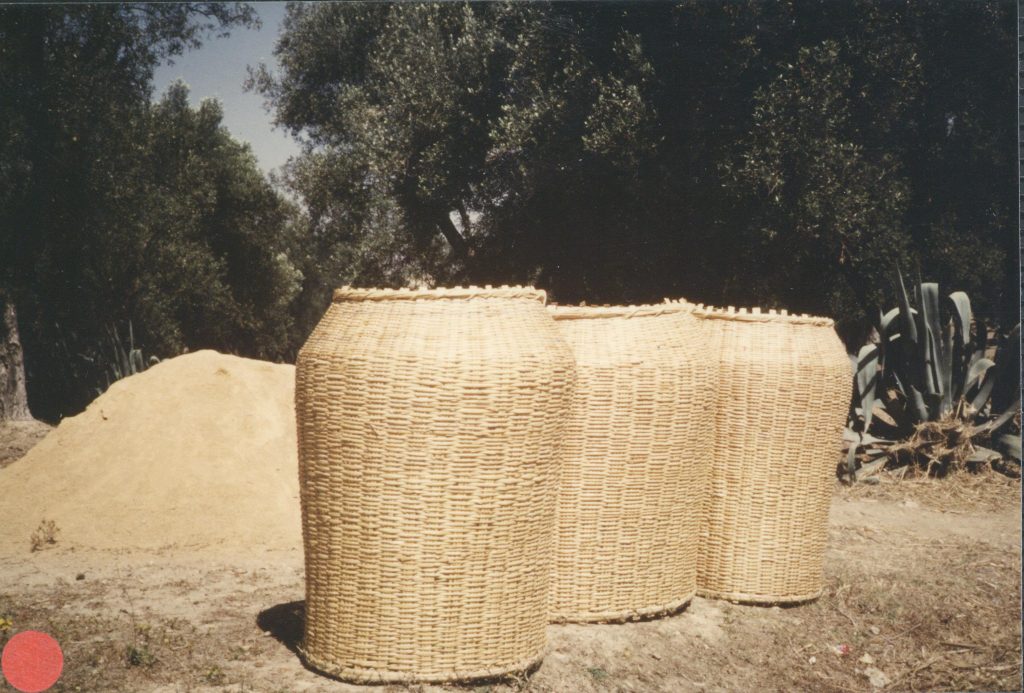
| The corn for grinding comes to the mill from the customer’s house where it will have been stored loose in a secure mud-walled and floored room on the first floor or in a special basket, akhuzam. After weaving the basket is mud-plastered and provided with a closely fitting, woven reed base and a lid. Until 50 years ago most Berber villages had a communal storehouse – grain being only one of various commodities or valuables needing protection from bands of marauders and thieves – called a tighremt: a mud or stone walled fortress, placed as inaccessibly as possible and with a guardian. |
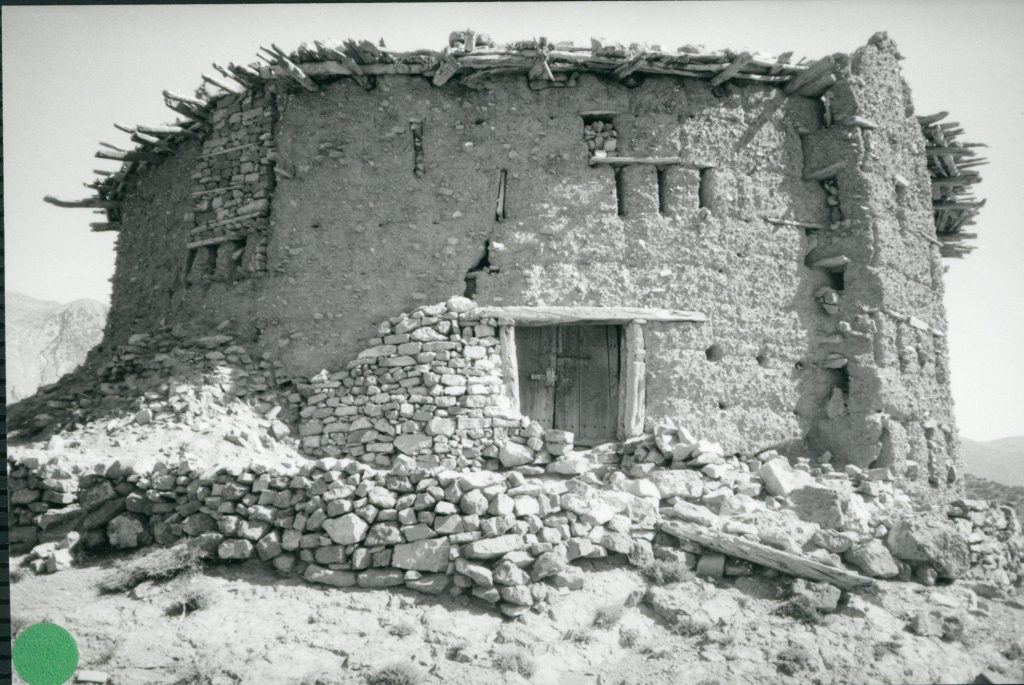
| The marabout (shrine) near Tabant in the Aït Bou Guemmez valley (above) also served as a tighremt. The dark passages and compartments are now empty. Each individual ‘safe’ was closed by a door bolted in the traditional fashion. Each souk (market) has an area reserved for the sale of grain: the Essaouira corn-exchange is, naturally enough, in the open air. Samples are laid out for the customers’ consideration. |
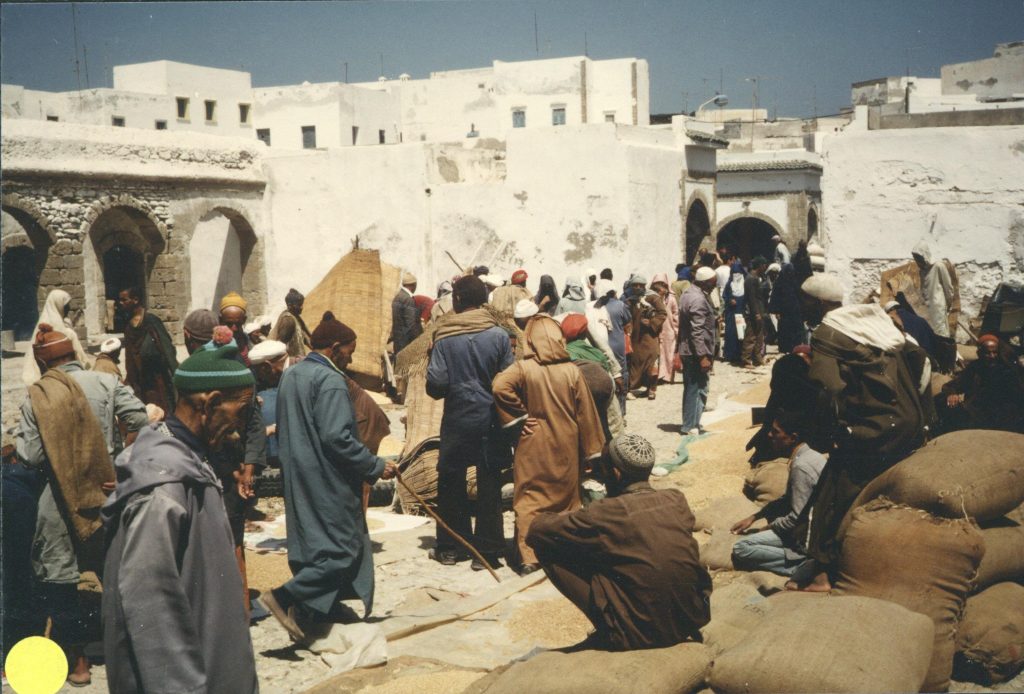
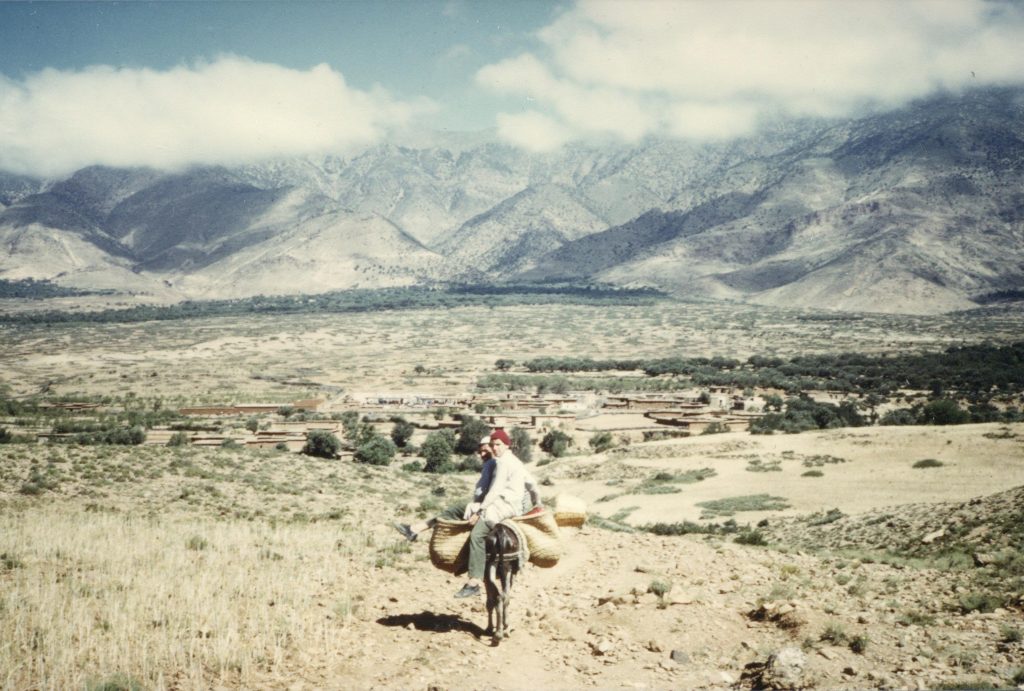
Millers on duty
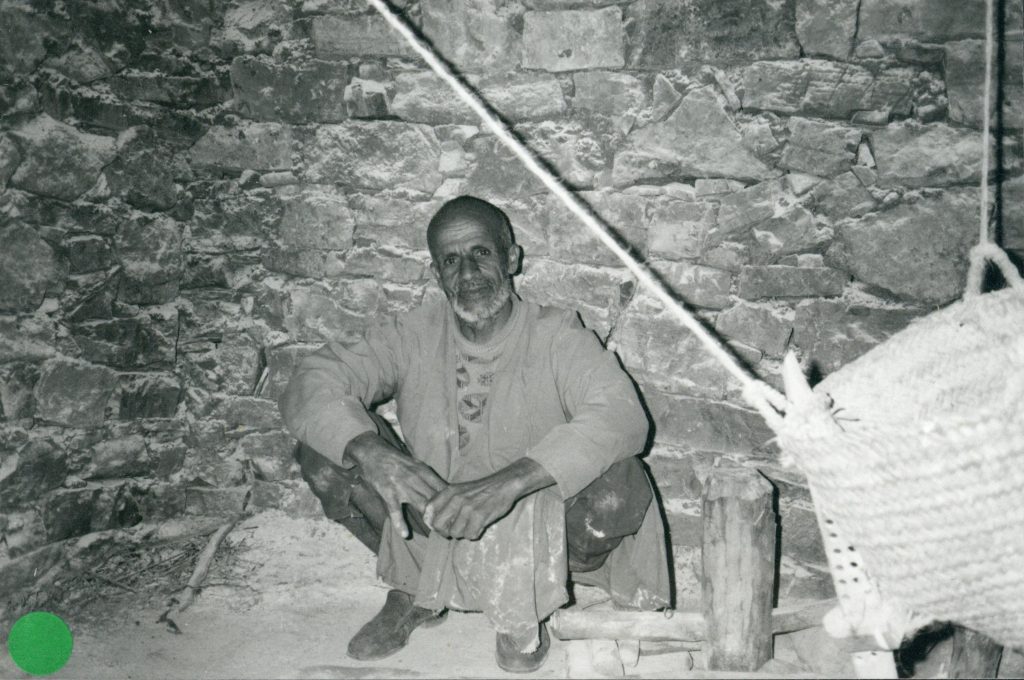
| In country areas where free milling, and by the womenfolk, is the rule, the miller/mill-owner is only intermittently at his mill, whose maintenance is his responsibility. |
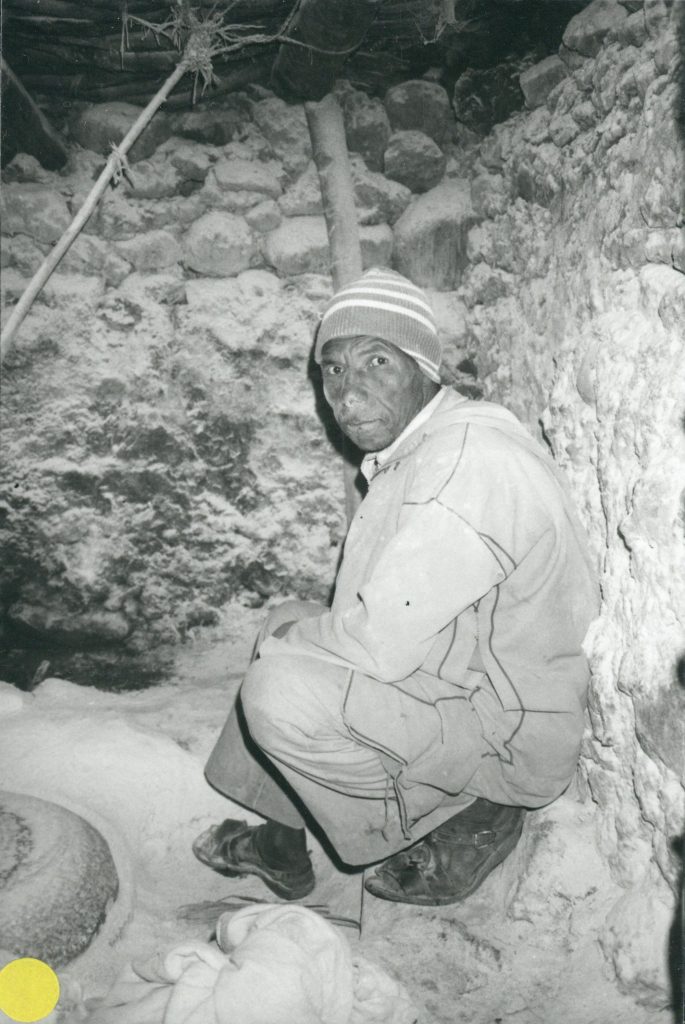
Where a good water supply makes toll-milling advantageous, the miller is busy about his group of mills checking on a smooth transition from one customer to the next, with the consequent readjustment of the stones to grind wheat rather than barley, for instance, and ensuring that each customer renders his toll of 10%, and grinds his corn to his satisfaction.
The miller at Ouzoud
Hello
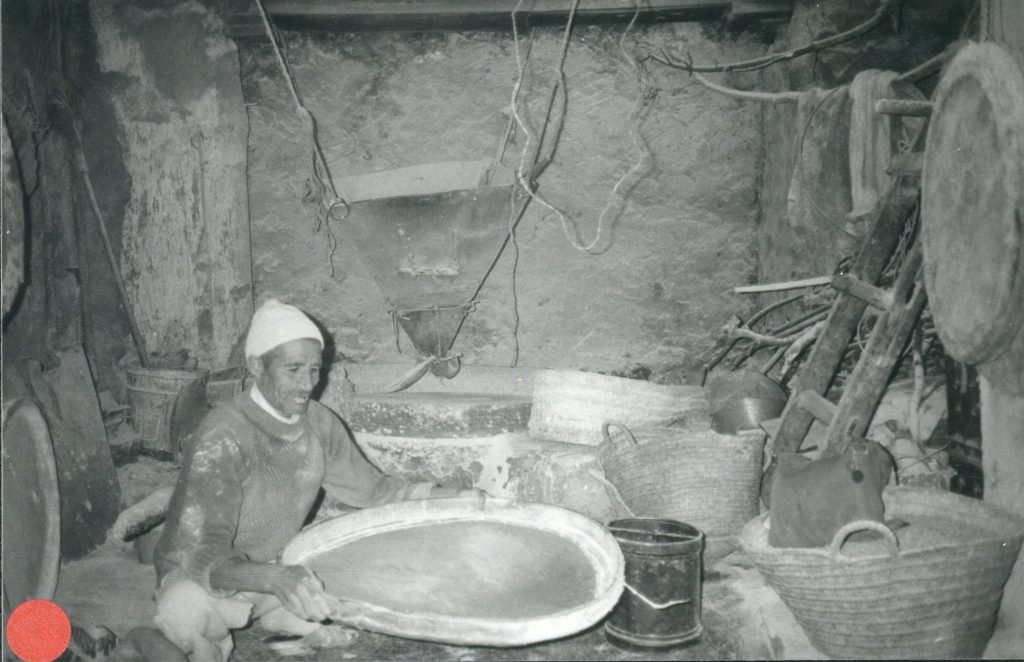
| In a roomier millhouse in the town of Sefrou (above), where the miller himself does the work and is every so often receiving sacks or baskets of grain from customers, he may be deputed by some of them to sieve their flour, as in the photo. In one commercial watermill in Fez three millhands with sieves of varying meshes were seen working at once on some freshly ground flour, which passed from one to the next and became increasingly finer in quality. Such an operation would be carried out by a bolter or wire-brush machine in a British mill, unknown in Moroccan watermills whose available waterpower is so much less. The miller at Sefrou was ready to work his mill for 24 hours a day, finding time to sit at the doorway talking to acquaintances and customers, to eat meals brought from his nearby home and to stretch out on a makeshift bed whenever a full hopper permitted him several hours’ rest. |
Milling for Supper
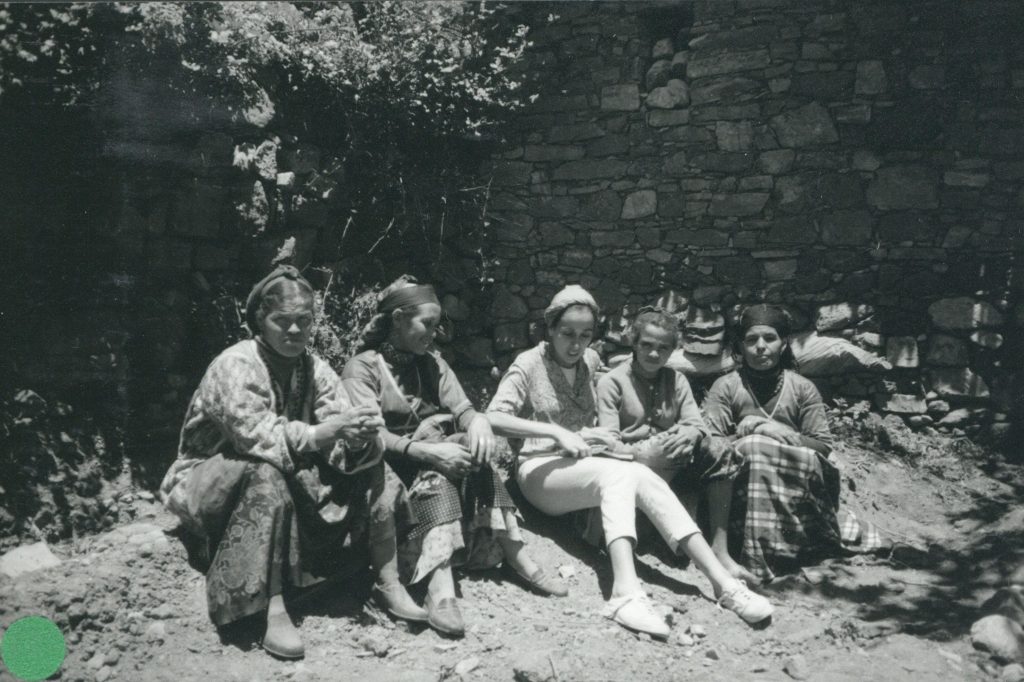
| At Targa n’Oufra Amina, our interpreter, talked with a group of local women, who were delighted to find a girl from the capital interested in them and their mills (above). The woman on the right owns a mill, its wheel needs the attention of the village carpenter, but its removal requires the assistance of their menfolk and the repairs will cost money. No tolls are charged in these mills, so there is nothing in the kitty for maintenance. |
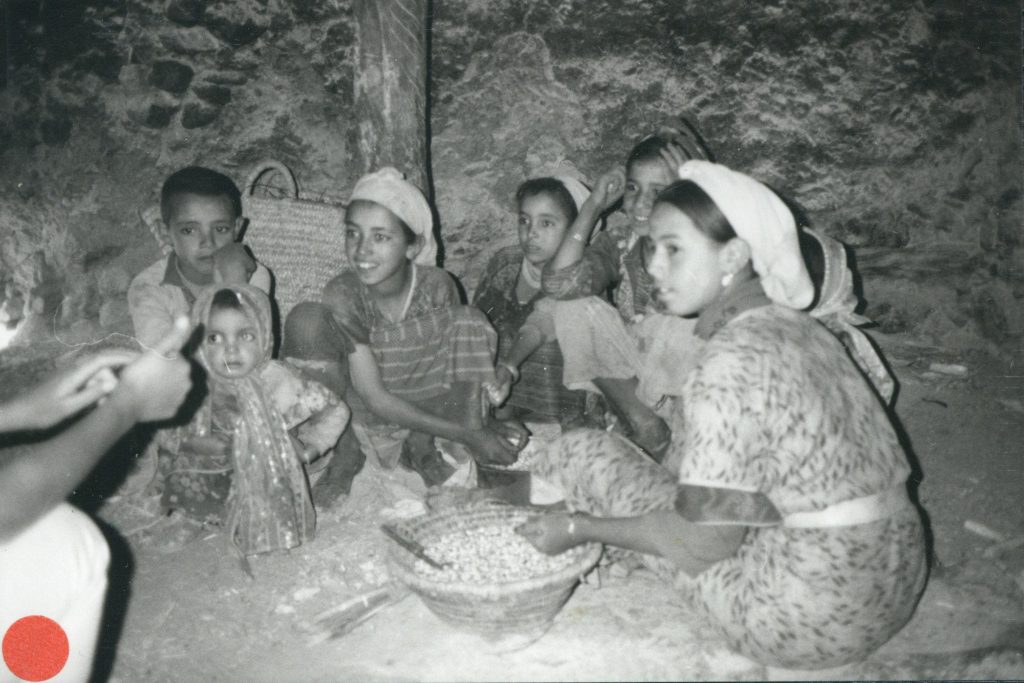
| Instead of school these children at Takousht (above) have domestic chores, in this case taking maize to the mill, where for once there is a stranger to chatter to. Taourirt n’Ougard possesses a communal cookhouse (below), a wise economy in a country short of fuel. The 18 households live close to each other in the hamlet. Tall mud-plastered ovens are open on top for cooking pots and right down one side for stoking with brushwood and logs. |
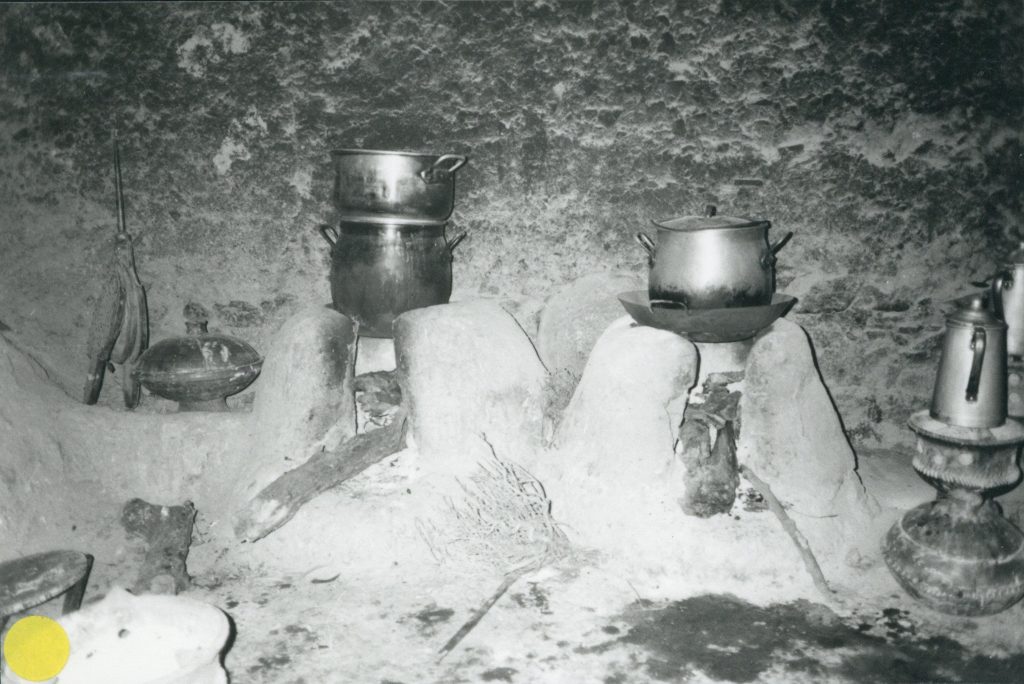
| The larger oven can be used for baking bread: via the stoke hole, on hot stones, or from the top, slapped on smooth inside walls after the embers have been raked out. Only yards away up the track stands the first of 6 mills fed from an irrigation tank. These small communities are all in Ounein. |
